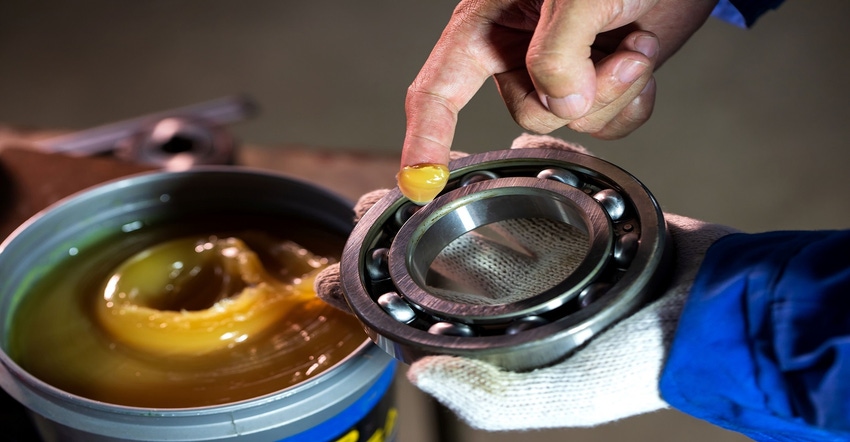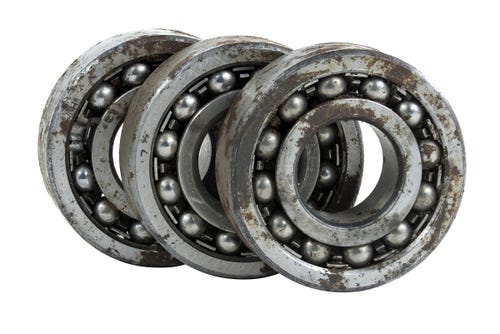Restored bearings can deliver economic and environmental benefits for manufacturers.
May 10, 2023

Chris Johnson, managing director at SMB Bearings
Bearing remanufacturing is gaining traction in heavy-duty industrial applications as a practical and sustainable alternative to replacing worn bearings. The process involves rebuilding a used bearing to meet or exceed the original manufactured product's specifications.
Bearing remanufacturing is the process of restoring used or worn-out bearings to their original or improved operating condition. As an end-of-life management solution it is gaining popularity, and for good reason. Not only do remanufactured bearings offer a cost-effective solution for businesses, but they provide an environmentally-friendly alternative to buying new bearings. According to SKF, it reduces the amount of raw material needed by around 62%. It also creates 70% less waste. This is because making a new bearing from scratch involves more than 100 separate processes. In remanufacturing, this is cut to less than ten.
The Remanufacturing Process
Remanufactured bearings can use a combination of reused, repaired, and new parts, and bearings with more than 30% of their remaining service life can be remanufactured. A thorough inspection is conducted to determine the appropriate refurbishment process. The process involves several steps, including inspection, reclassification, refurbishment, and remanufacturing.
The first step is to inspect the used bearing thoroughly, which involves comparing it with the initial specification drawing. The bearing is then disassembled, cleaned, and degreased. Following a visual inspection, microscopic inspection, dimensional inspection, and testing will occur. This will culminate in a detailed analysis report that details recommendations for appropriate refurbishment and remanufacturing processes.
The next step is reclassification services, which encompass minor repair, demagnetization, dynamic testing, relubrication, reassembly, and packaging for the bearing’s return to the industry.
If further intervention is needed, then refurbishment might be necessary. This step will include the previous actions in addition to one or more of the following: replacing rolling elements or components like seals and snap rings, remanufacturing the bearing's cage, plating mounting surfaces, or polishing the bearing’s raceways.
The final stage of remanufacturing involves altering the component by grinding, installing a new ring, and modifying it. At this point, engineers have the option to enhance the performance or characteristics of the initial bearing, which can lead to increased operational efficiency and reduced maintenance requirements in the future. Upgrades may include the addition of features such as black oxidation, or the incorporation of extra sensor functions for condition monitoring.

Remanufacturing Delivers Economic Benefits
Replacing a worn bearing can be costly and, in many cases, remanufacturing can provide significant cost savings. For example, if a large industrial bearing in a pumping system fails unexpectedly before the end of its service life, remanufacturing could increase the life cycle of the bearing by more than 50&, and provide up to 60% savings compared to the cost of a new bearing.
Smaller bearings, like miniature bearings, may not be cost-effective to remanufacture. This is due to the cost of disassembling, cleaning, inspecting, and reassembling the bearing, which may be higher than the cost of simply replacing the bearing with a new one. Additionally, the amount of wear and damage that can be repaired on small bearings may be limited, making remanufacturing less practical for these components.
Remanufacturing larger bearings, on the other hand, offers a favorable cost-benefit depending on their condition, complexity, price, and application. Large bearings – such as spherical roller bearings, deep groove ball bearings, tapered roller bearings, caster bearings, and slewing bearings – are good candidates for remanufacturing.
Additionally, relubrication services, like those offered by the bearing relubrication specialist SMB Bearings, can extend a bearing's service life and improve operational performance at an affordable price point. Indeed, relubrication is crucial if you intend to repurpose old-yet-healthy bearings for a different application. By doing so, businesses can save money as opposed to repeatedly purchasing new bearings, which makes it a smart and efficient form of recycling.
Remanufacturing can also reduce lead times significantly, increasing machine uptime and profit. It can normally take weeks for a replacement specialized industrial bearing to arrive. In contrast, remanufacturing can reduce lead times and allows facilities to maintain better machine availability and reduce stock.
Remanufacturing Means Sustainable
Aside from the economic benefits, bearing remanufacturing also has a positive impact on the environment. The process reduces the unwanted use of natural resources and the disposal of components when they become damaged or fail. Remanufacturing feeds into the circular economy model by recovering and regenerating products and materials, unlike the traditional make-use-dispose industrial model.
The energy requirement for remanufacturing is also as low as 90% when compared to the production of a new bearing, which minimizes the need for new raw materials and offers quicker manufacturing turnaround times. Additionally, remanufacturing can help reduce the carbon footprint associated with producing new bearings.
Finally, remanufacturing can also help reduce greenhouse gas emissions associated with transportation, as remanufactured bearings can often be sourced locally rather than shipped from far-off locations.
After the remanufacturing process has been carried out, it’s crucial to avoid the recurrence of the damage that affected the bearing before it was remanufactured. Condition monitoring techniques, including vibration analysis, can be implemented to monitor the continual status of the components.
Remanufactured bearings offer a cost-effective, environmentally friendly, and sustainable alternative to buying new bearings. As more businesses recognize these benefits, remanufactured bearings have the potential to become the norm in industries that rely heavily on bearings.
Chris Johnson is the managing director of SMB Bearings.
You May Also Like



